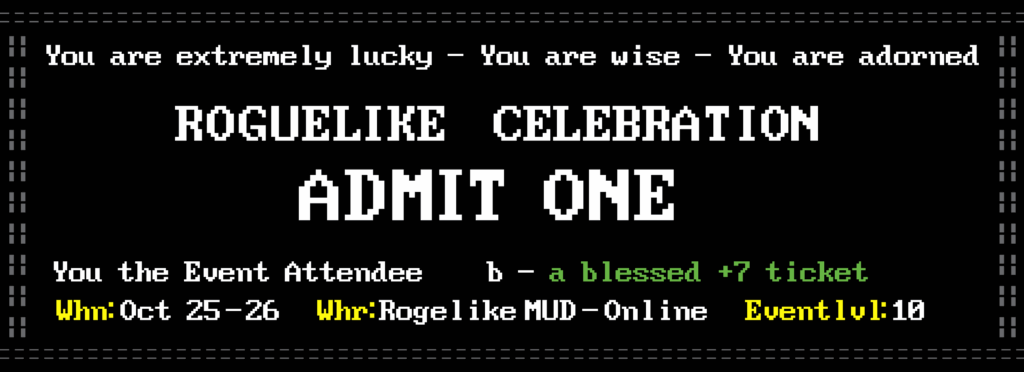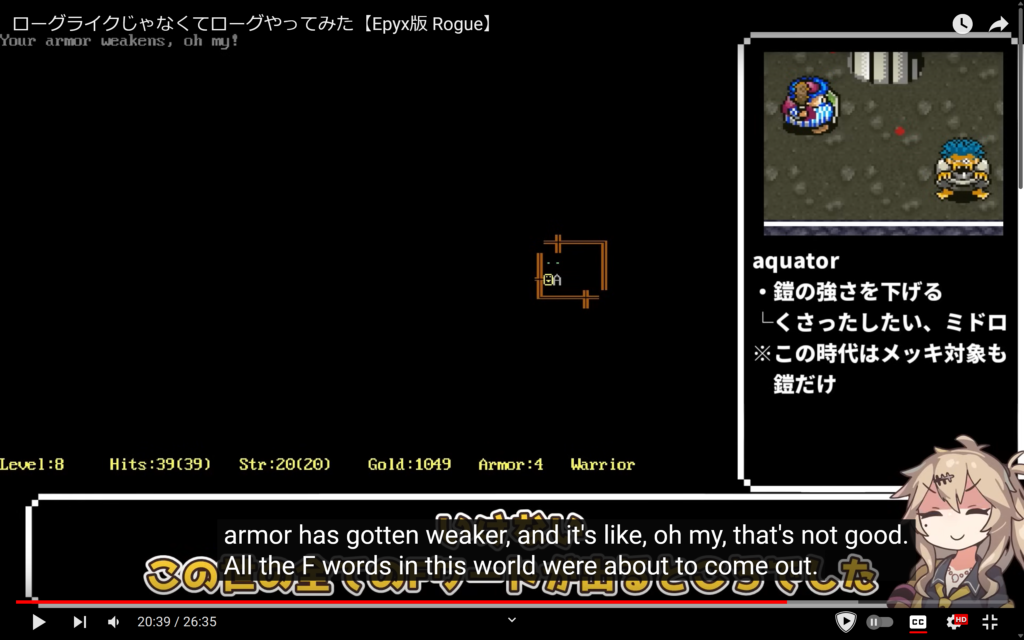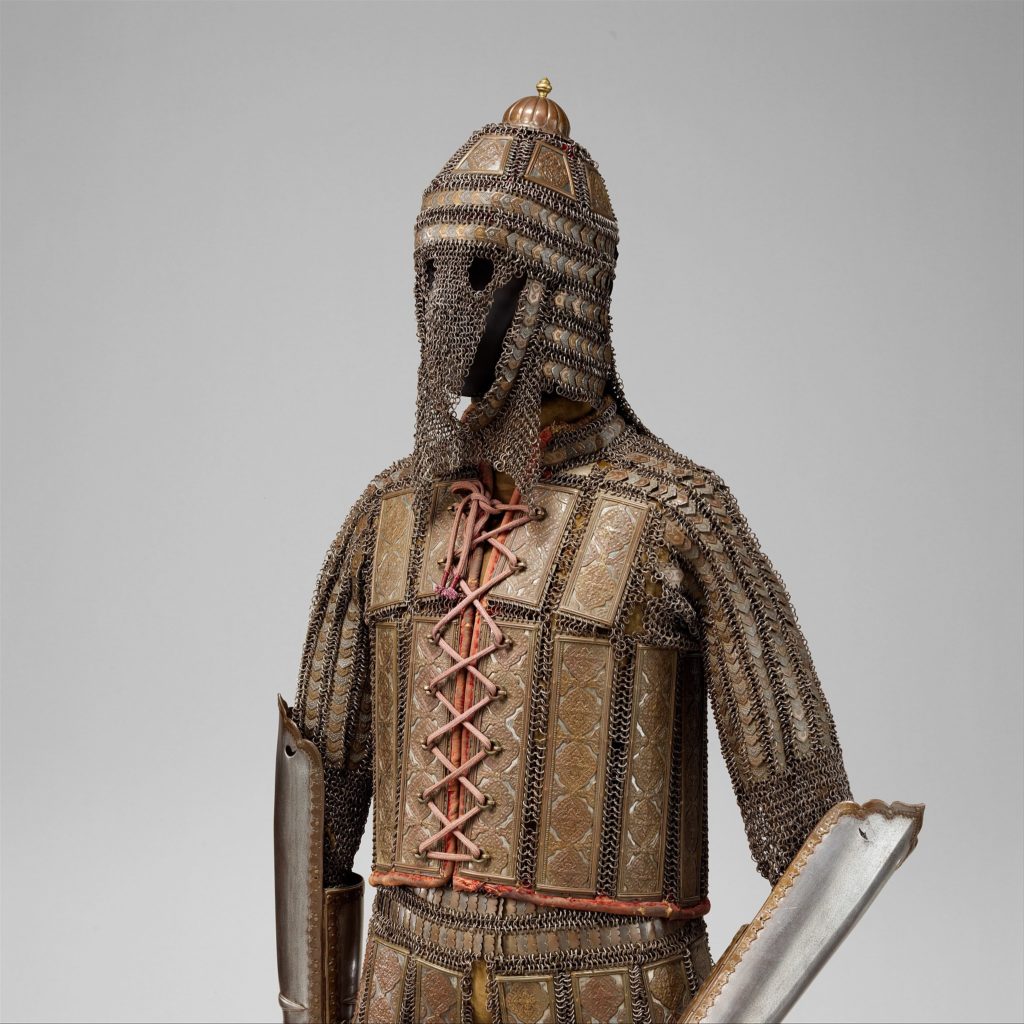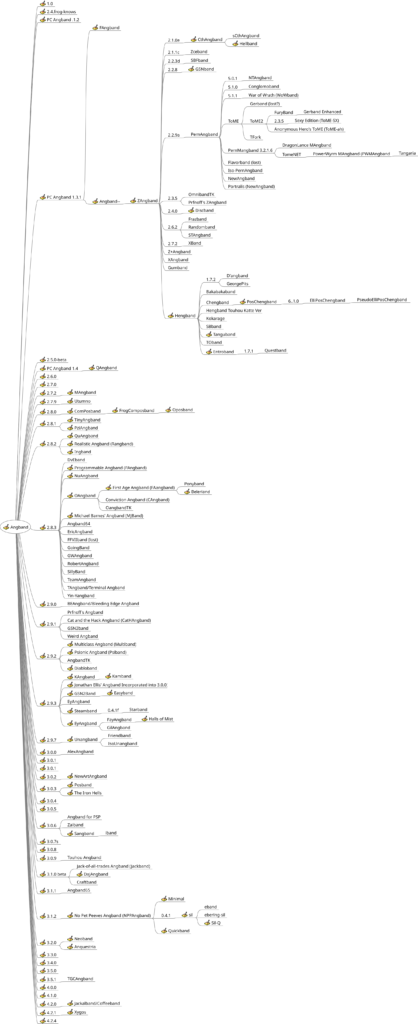I’m helping out with Roguelike Celebration 2025, the now ten-year-running conference-like thing about all things roguelike, roguelite, and roguelike-adjacent. Yes, I’ve presented there three times so far, and figured it was time to give back!

While RC got its start as an in-person conference, when the pandemic hit they switched over to being entirely virtual, presented through video feed. All of their talks end up posted online, so anyone can see them for years after. But if you can attend during the conference you can participate in chat, ask questions of the speakers, and explore a very clever MUD-like chat interface!
I’ve tried to spread the word about Roguelike Celebration where I can, through social media and this very blog here. Every year they have several very interesting talks that, if you read Set Side B, I know you’d be interested in seeing. They’ve hosted Tarn Adams, co-creator of Dwarf Fortress, the creators of the original Rogue, and many other thoughtful speakers.
This year Roguelike Celebration takes place October 25-26. They sell tickets, but they also let people who are strapped for cash apply for a free ticket. (If you can pay for admission though, please do, as it takes money to run an event like this.)
And if you have a roguelike, or even vaguely-related project, please please please answer their Call For Proposals, to apply to present your work to their devoted audience of extremely thoughtful attendees! The CFP site is here, and their deadline has been extended to July 20th, so you have about three weeks to get in your proposal!
Give it a shot, it’s a great way to spread the word about roguelike work, or about a procedurally-generated game you’re interested in, or just something you think the world should know about.
By volume most game players, let’s be frank, are interested in the big AAA productions. But there are lots of people out there who are willing to give indies a chance, which roguelike games often are, and we have to stick together. Not only to talk with each other and build those connections, but to do it in public, non-corporate venues. Reddit largely is a sham these days, more interested in monetizing their userbase, and Discord isn’t web-searchable, and requires navigating a maze of requests that you upgrade to “Nitro.”
I do not lie: little volunteer-run organizations like Roguelike Celebration are a lot closer to the true spirit of the internet, and the World Wide Web, than those are. So please keep them in your thoughts, if you can buy a ticket, and if you have something to present, answer their CFP! You won’t regret any of those things.











